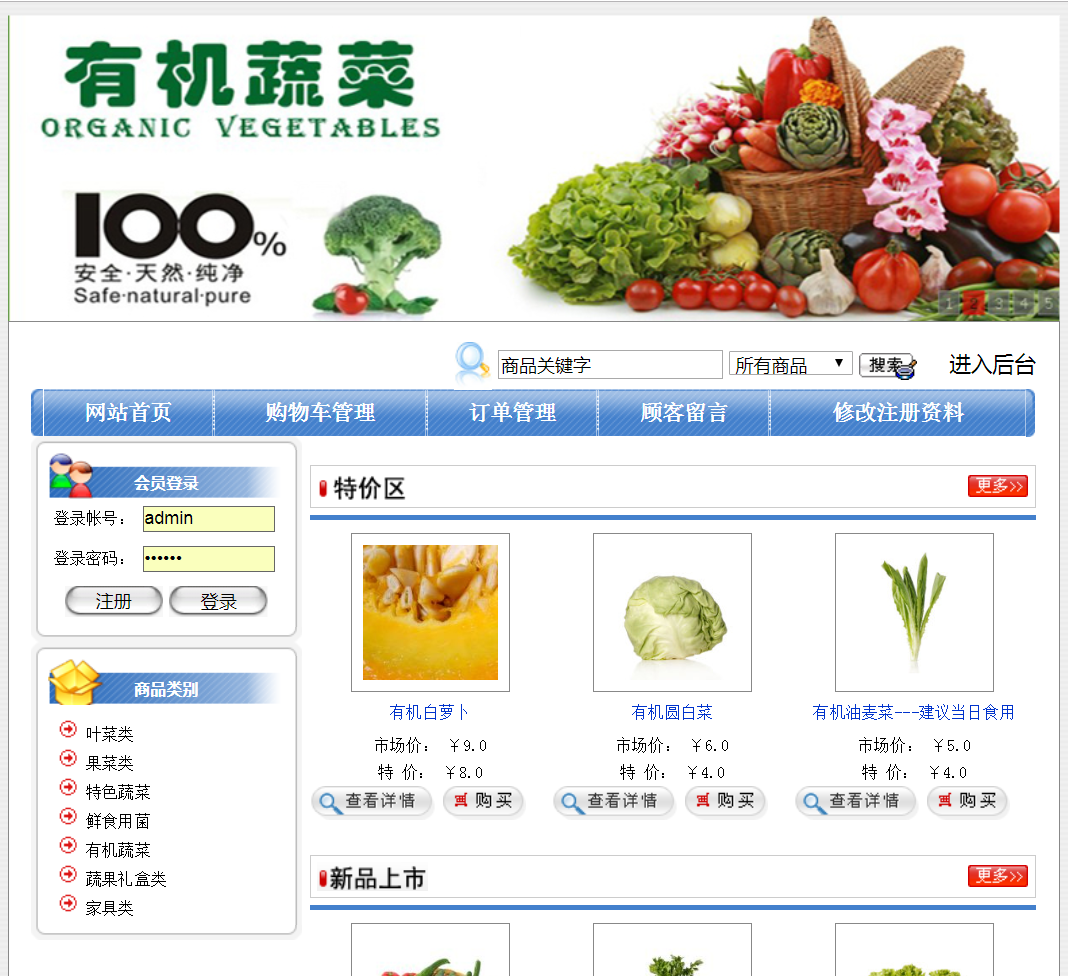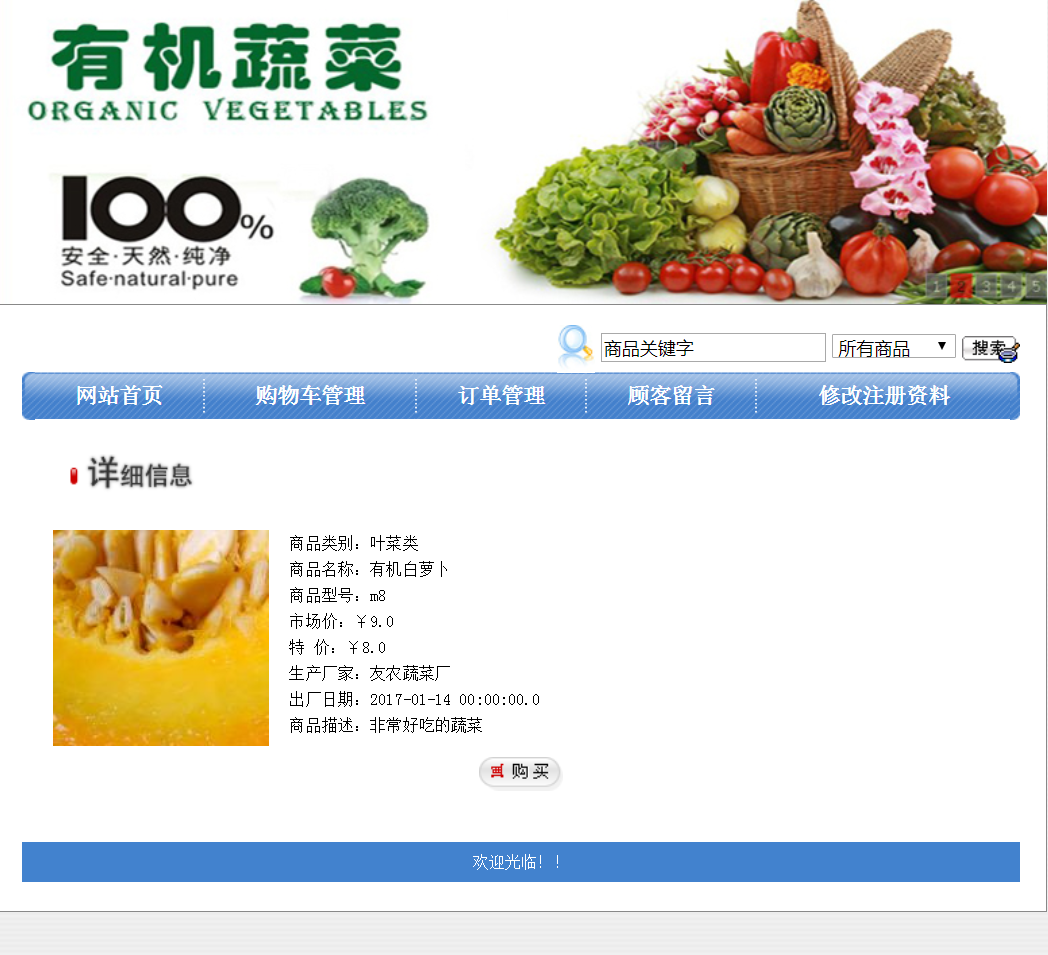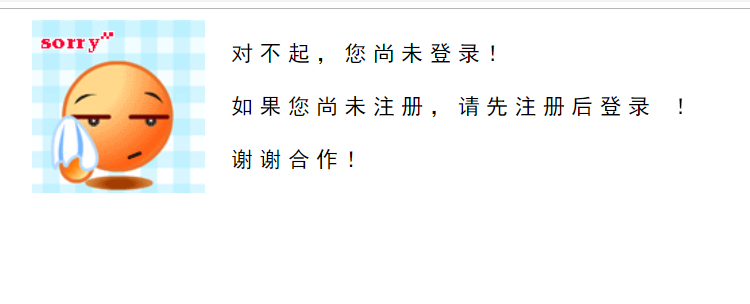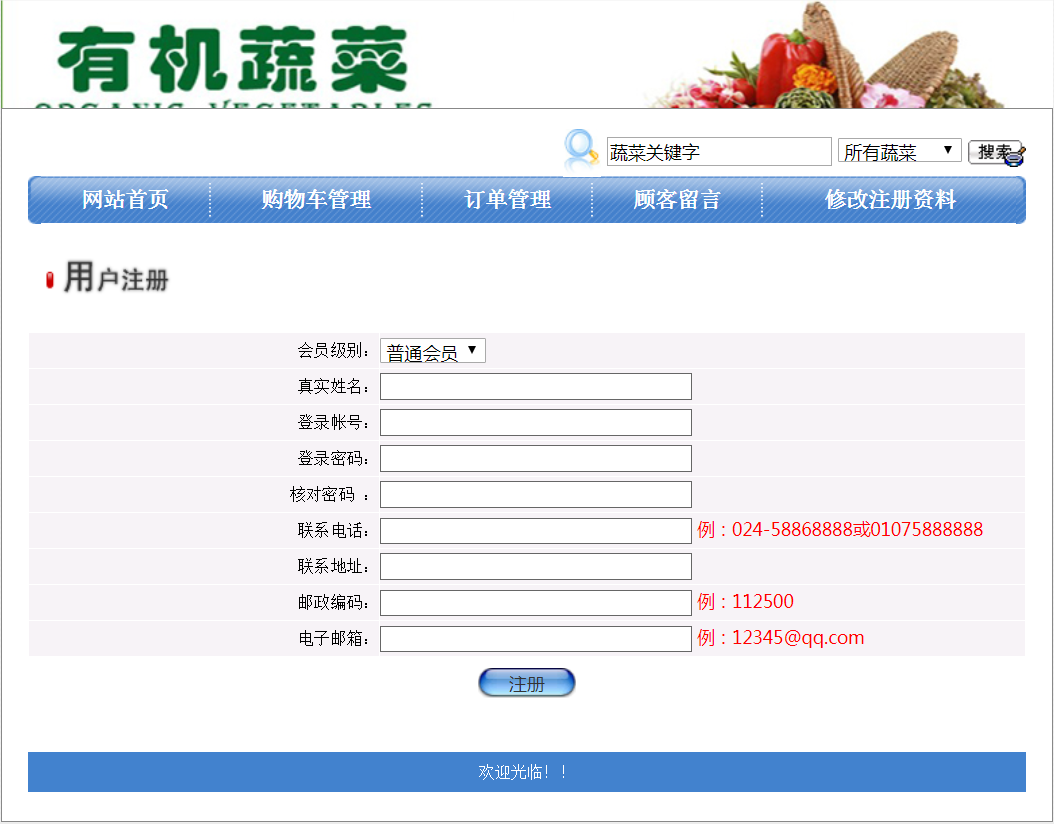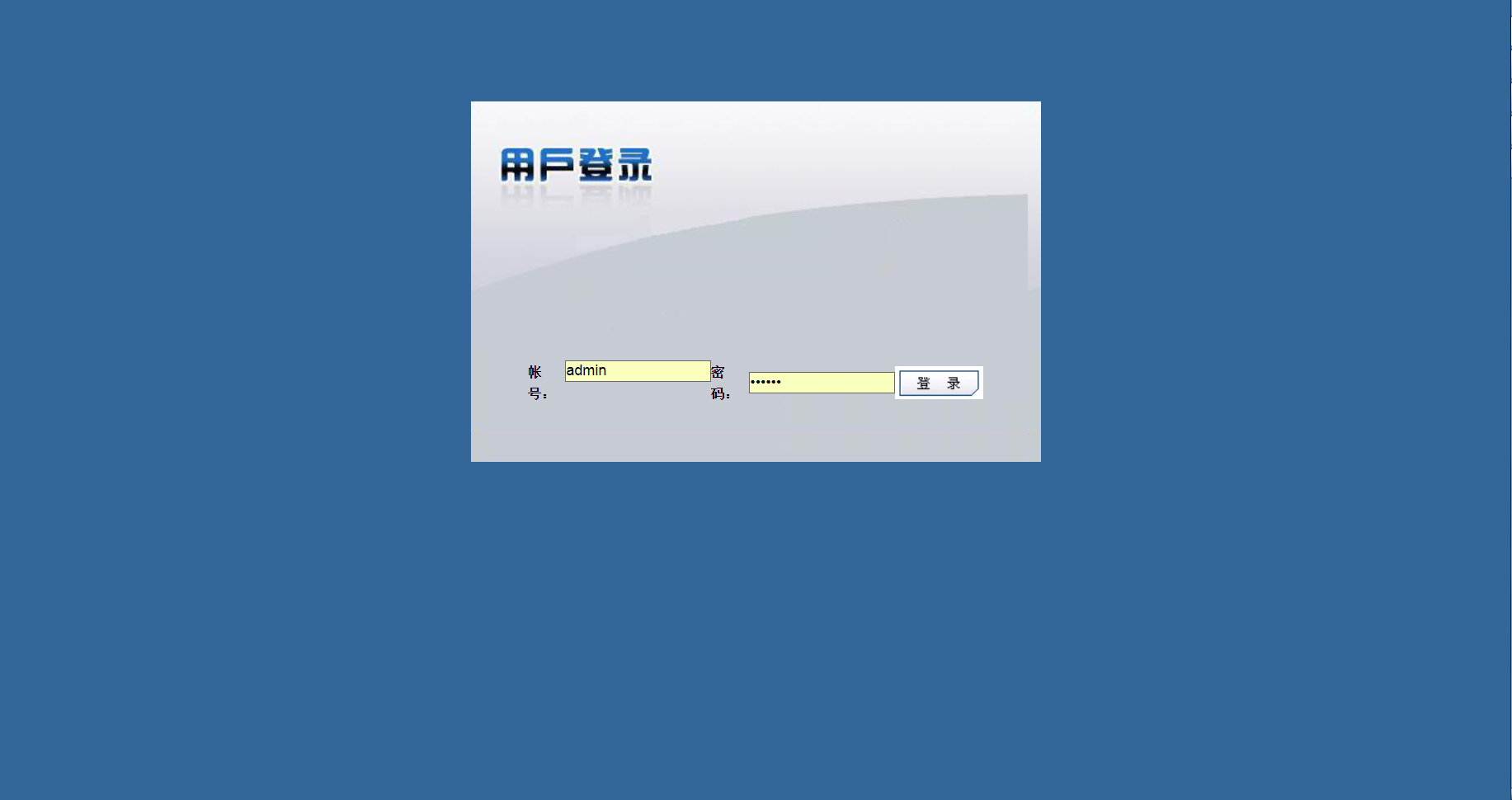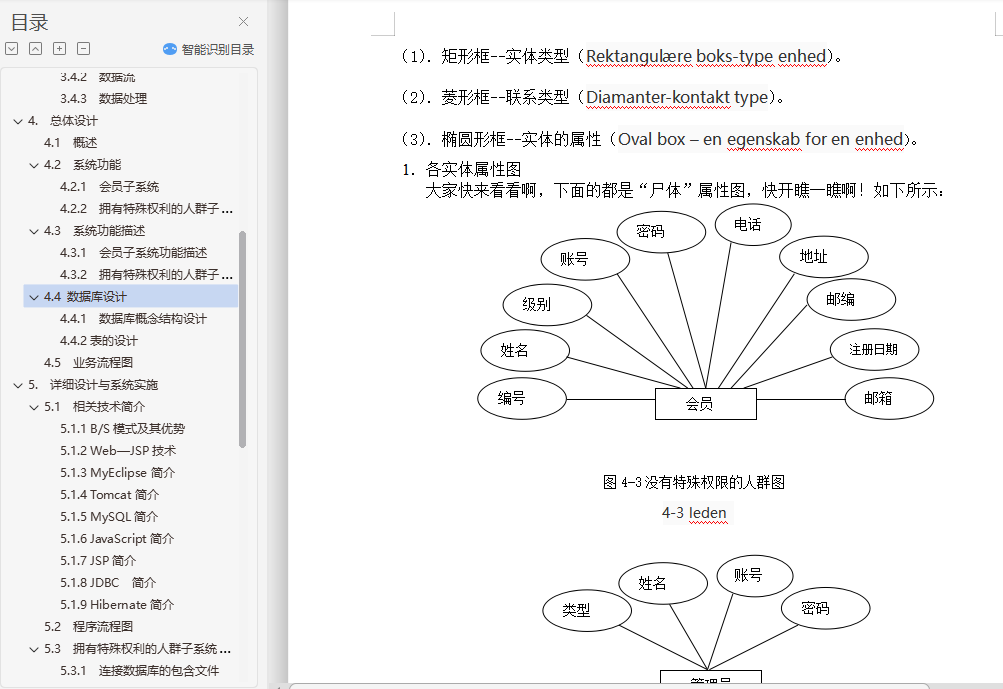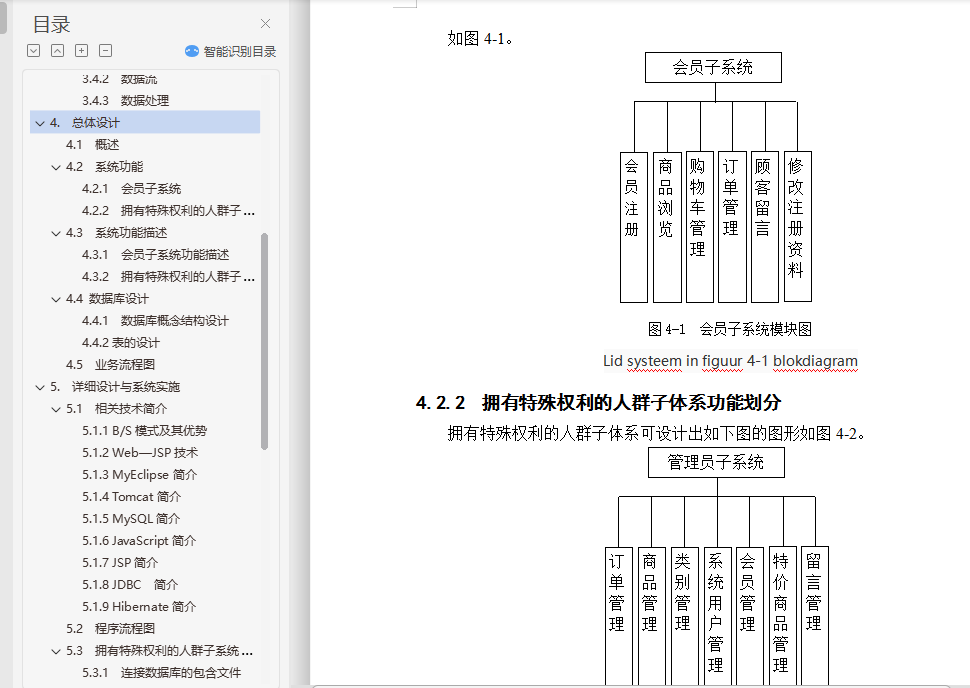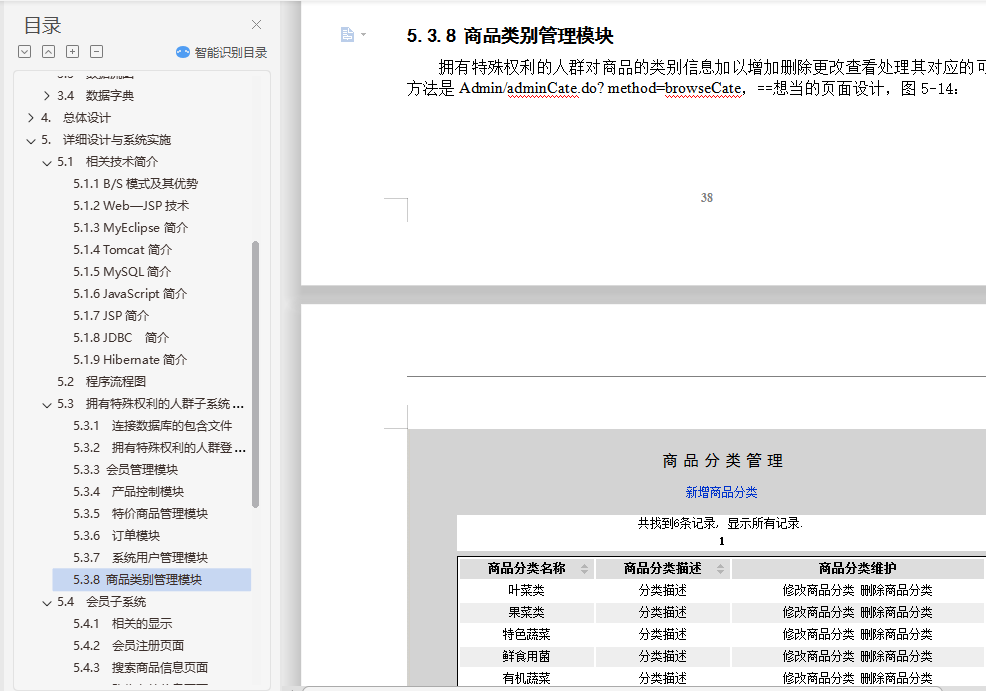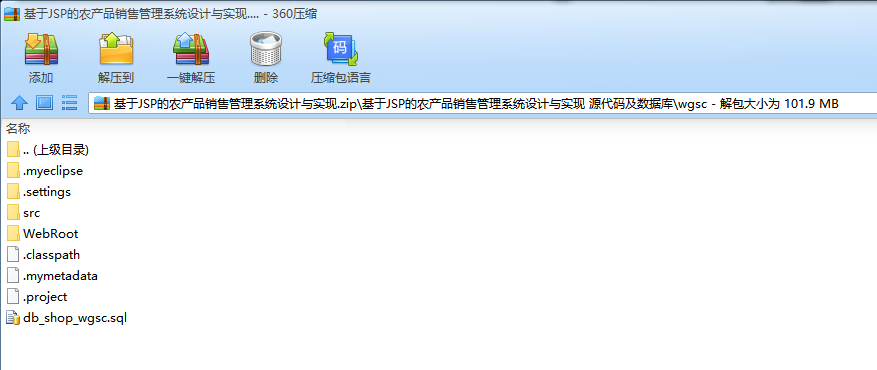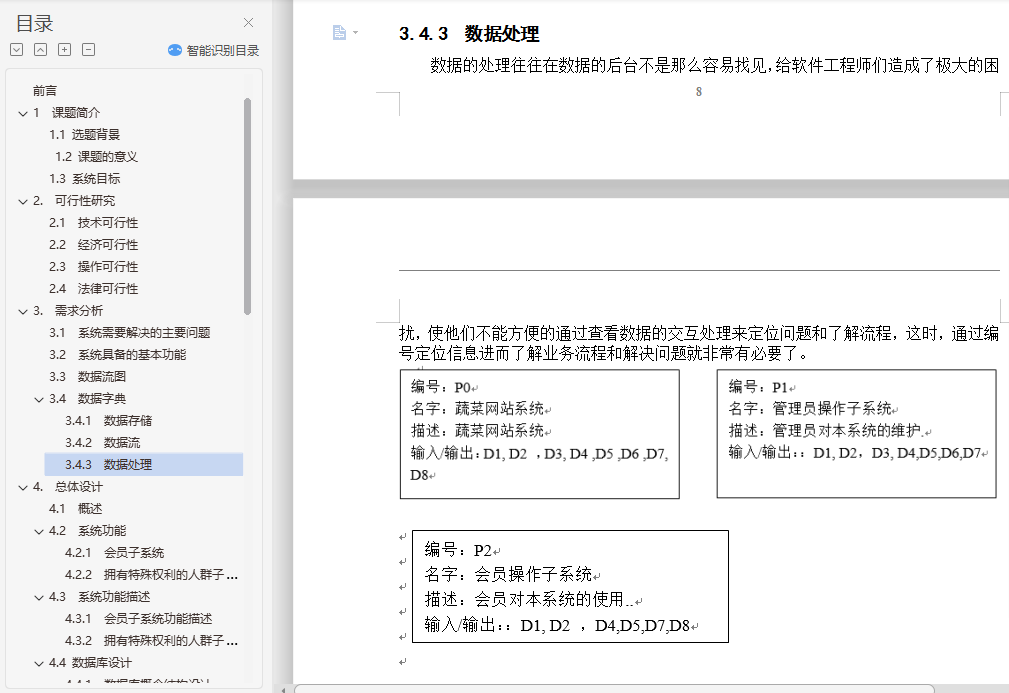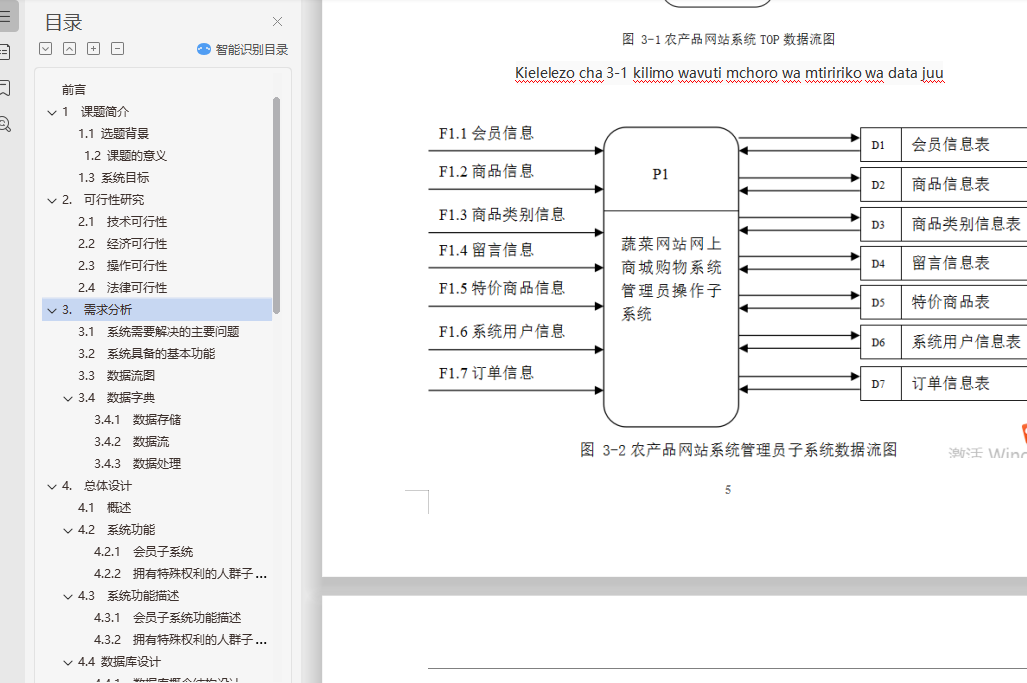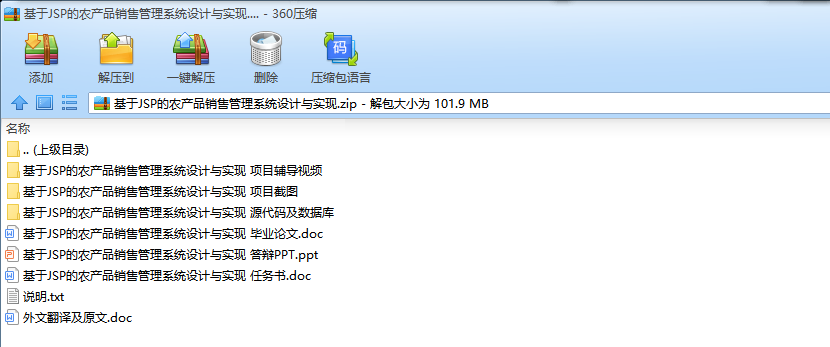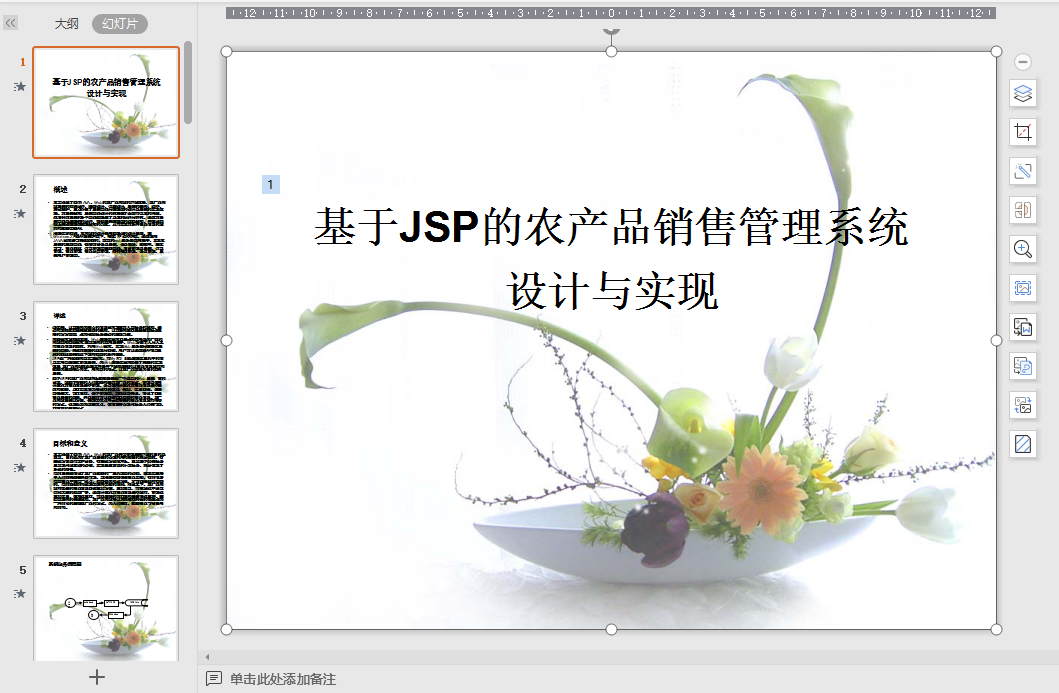摘要
本文论述了基于JAVA、Web的农产品销售管理系统开发的目的及意义,目的是为了农产品资源的合理利用和物资的充分交流,有些地方富余而卖不出去,有些地方却吃不上。意义在于加快社会主义现代化建设的步伐、实现民主富强的小康社会,充分体现各地的特色。
根据实际需求和,本人策划了(基于JSP的农产品销售管理系统设计与实现)本体系,本系统充分考虑了国家的农产品生产和销售管理之间的相互关系,以及互联网络的现代化应用,在互联网络中,搭建一个类似网上商城一样的网站系统,其中会用到 MyEclipse、MySQL、JSP等之类的网络工程技术,本系统分为前台销售系统和后台管理系统,前台会员系统,为会员提供:会员注册、购物车、顾客留言、商品浏览、订单管理等主要功能。后台管理系统,为管理员提供:农产品订单管理、农产品的商品管理、农产品的商品分类管理、农产品的特价商品管理、会员信息管理、系统用户管理等优质服务。
关键词:JSP;农产品;网上商城;MySQL
Abstract
This paper discusses the purpose and significance of the system based on JAVA, the development of agricultural products sales Web, in order to fully communicate the rational use of agricultural resources and materials, and sell surplus in some places, some places have not. The significance lies in speeding up the socialist modernization construction, realize democracy and prosperity a well-off society, fully reflect the local features.
According to the actual demand, I designed (Web based agricultural products sales management system) of the system, the system takes full account of the relationship between national agricultural production and sales management, and modern application of the Internet, in the Internet, build a similar online mall as the website system, which use of network engineering technology MyEclipse, MySQL, JSP and so on, the system is divided into front and back office management system, sales system, the membership system, to provide members: the main function of membership registration, shopping cart, customer message, product browsing, order management etc.. The backstage management system, provide the administrator: agricultural products, agricultural products, order management, merchandise management, commodity management, classification of agricultural products agricultural products special offer merchandise management, member information management, user management and service system.
Key words: JSP; agricultural products; online shopping mall; MySQL
目录
摘要 I
Abstract II
前言 1
1 课题简介 2
1.1 选题背景 2
1.2 课题的意义 2
1.3 系统目标 3
2. 可行性研究 5
2.1 技术可行性 5
2.2 经济可行性 5
2.3 操作可行性 5
2.4 法律可行性 6
3. 需求分析 7
3.1 系统需要解决的主要问题 7
3.2 系统具备的基本功能 7
3.3 数据流图 7
3.4 数据字典 9
3.4.1 数据存储 9
3.4.2 数据流 10
3.4.3 数据处理 12
4. 总体设计 13
4.1 概述 13
4.2 系统功能划分 14
4.2.1 会员子系统功能划分 14
4.2.2 管理员子系统功能划分 15
4.3 系统功能描述 15
4.3.1 会员子系统功能描述 15
4.3.2 管理员子系统功能描述 16
4.4 数据库设计 16
4.4.1 数据库概念结构设计 17
4.4.2数据库逻辑结构设计 19
4.5 业务流程图 20
5. 详细设计与系统实施 23
5.1 设计概述与开发工具简介 23
5.1.1 B/S模式及其优势 23
5.1.2 Web应用程序的开发—JSP技术 24
5.1.3 MyEclipse简介 24
5.1.4 Tomcat简介 24
5.1.5 MySQL简介 24
5.1.6 JavaScript简介 24
5.1.7 JSP简介 24
5.1.8 JDBC简介 24
5.1.9 hibernate简介 24
5.2 程序流程图 24
5.3 管理员子系统的实施 26
5.3.1 连接数据库的包含文件 27
5.3.2 管理员登录页面 27
5.3.3 会员管理模块 29
5.3.4 商品管理模块 30
5.3.5 特价商品管理模块 32
5.3.6 订单模块 33
5.3.7 系统用户管理模块 34
5.3.8 商品类别管理模块 35
5.4 会员子系统 36
5.4.1 系统主页面 36
5.4.2 会员注册页面 36
5.4.3 搜索商品信息页面 38
5.4.4 购物车信息页面 39
5.4.5 订单管理页面 42
5.4.6 顾客留言页面 43
5.4.7 修改资料页面 45
6. 测试与维护 47
6.1 测试的任务及目标 47
6.1.1 测试的任务 47
6.1.2 测试的目标 47
6.2 测试方案 47
6.2.1 模块测试: 47
6.2.2 集成测试: 48
6.2.3 验收测试: 48
6.2.4 平行运行 48
6.3 设计测试方案 49
6.4 系统维护 50
结束语 51
致谢 52
参考文献 53
